It’s a team effort to ensure rural students who are homeless get an equal education
By Jolie Peal ![]() , Reporter Nebraska Public Media News
, Reporter Nebraska Public Media News
Oct. 16, 2024, 5 a.m. ·
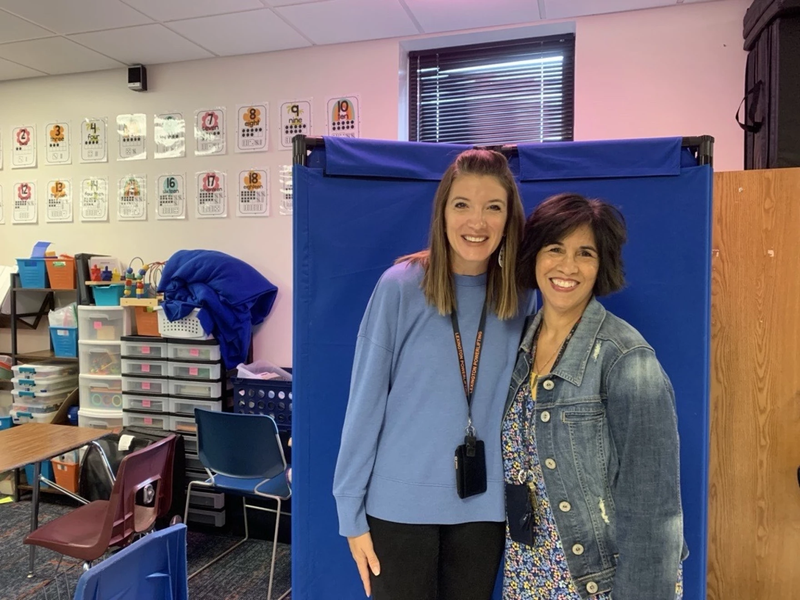
Listen To This Story
Lydia Baten cares for her three nephews and two children in her home in Lexington, Nebraska, located in the central part of the state. When school started in August, the children needed school supplies and clothes — expenses that Baten, who was diagnosed with breast cancer in November 2023, tried to balance with paying for her chemotherapy. Three of the children started high school, one started first grade and one had already graduated.
McKinney-Vento defines “homeless children and youths” as individuals who lack a fixed, regular, and adequate nighttime residence.
Last school year, Baten also lost her job and needed money, food and clothes for her family. One of Baten’s children spoke to a teacher about the family’s struggles. That teacher connected the family with the district social worker, Kristi O’Meara.
Baten’s conversations with O’Meara revealed the federal McKinney-Vento Homeless Assistance Act considers her three nephews as unaccompanied youth, meaning the family qualifies for resources set aside for students experiencing housing instability.
“I was a little stressed,” Baten, whose first language is Spanish, said through an interpreter. “It is helping me a lot because food is expensive now. I felt better because I was so stressed during my chemotherapy, and that whole process also affected me emotionally.”
“Estaba un poco estresada, porque ya ve que los niños cuando entran a la escuela o cuando y también este con referente a la comida me está ayudando muchísimo porque la comida ahora está caro y me ayudó bastante y me sentí mejor porque eso me estaba como estresando durante mi quimioterapia y todo ese proceso también me estaba afectando emocionales.”
McKinney-Vento laws ensure students identified as experiencing homelessness get the same education as their peers. The law allows them to enroll at their school of origin, even if they move out of the area. The school must provide transportation to class for students and enroll them even if they don’t have all the proper documentation right away.
As part of the series Unhoused/Unschooled, The Midwest Newsroom found that, in large rural swaths of Iowa, Kansas, Missouri and Nebraska, hundreds of school districts report they don’t enroll any homeless students, even though other measures of poverty indicate that’s likely not true.
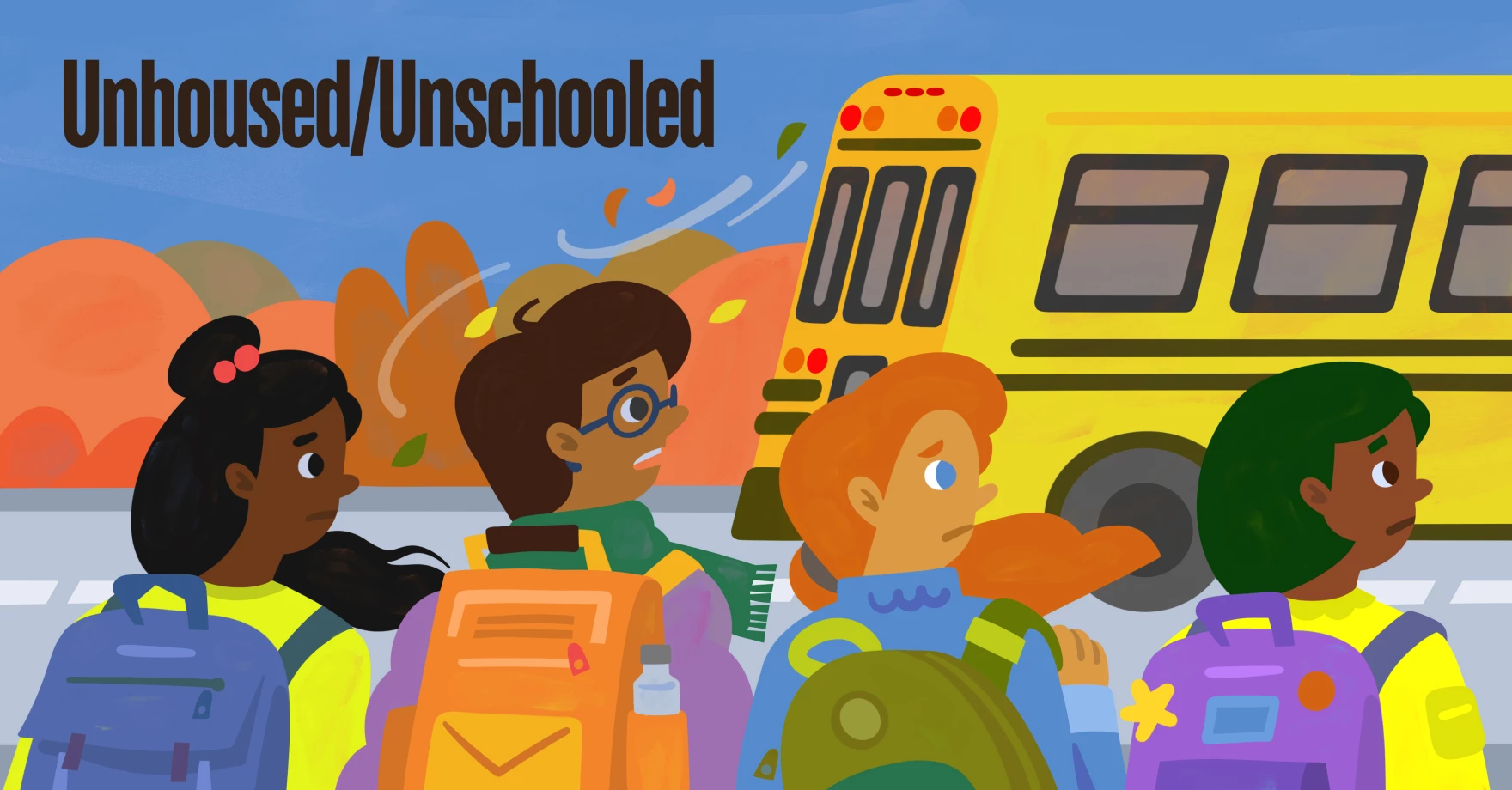
“Potentially half of students who are experiencing homelessness are not being identified,” said Barbara Duffield, executive director of SchoolHouse Connection, a nonprofit advocacy organization for homeless education. “You don’t see the students, so you don’t think they’re there. Then you don’t set aside enough funding to have the capacity to go out and find the students.”
The challenge is that many students go under the radar when their housing is disrupted. Nebraska recently stepped up its efforts to identify which students qualify and can receive assistance. Part of that plan is coordinating with nonprofit organizations to help families in need.
Baten’s nephews received new clothes and vouchers to purchase food at the local grocery store through McKinney-Vento. A local nonprofit helped pay for a heating gas bill.
Nebraska numbers
In Nebraska, 4,868 students were identified as eligible for services through McKinney-Vento during the 2023-24 school year, according to Ann Carmoney, the Nebraska coordinator for McKinney-Vento. That number grew from about 2,500 students in the 2020-21 school year because schools reopened after the pandemic. There has also been an increased focus on training school officials to recognize housing instability, Carmoney said.
But these student numbers represent only a portion of the state’s districts. According to information from a public records request, only 22 out of 244 public school districts reported students receiving McKinney-Vento resources in the 2022-23 school year. An additional 36 districts had nine or fewer students but didn’t release the exact counts, citing privacy concerns.
In some cases where officials report no homeless students in their districts, other data casts doubt on those claims.
For example, school districts in three of Nebraska’s poorest counties all reported having zero students facing housing instability during the 2022-23 academic year.
- Mullen Public Schools is in Hooker County, which has the lowest median household income in the state, at $43,333, according to the latest census data.
- Ainsworth Public Schools is in Brown County, which has the second-lowest median household income in the state, at $44,267, according to the latest census data.
- Garden County Schools is in Garden County, which has the third-lowest median household income in the state, at $47,139, according to the latest census data.
Carmoney makes sure each district in the state has a liaison dedicated to identifying students and offering those students the resources they are entitled to. She also distributes grant money.
Carmoney said she visits schools to train administrators and counselors on how to identify a student who might be struggling with housing. It can be a challenge, she said. Oftentimes, housing issues come with a stigma.
“They need to be handled with a little more care. Give them a little more grace and just kind of understand that they did not sleep, they have not showered, they have not had a meal,” Carmoney said. “Their expectations for that kid that day could be different.”
Those who qualify for McKinney-Vento services do not have a stable and suitable place to live.
This includes:
- Kids who are living with a relative who is not their guardian — also known as unaccompanied youth.
- Families who share housing because they can’t afford their own home — which is considered “doubled up.”
- Families or kids who live in hotels, trailer parks, camping grounds, emergency or transitional shelters, cars or parks.
“You could just see the counselors. Their minds are turning: ‘I know this kid and this kid and this kid and this family,’” Carmoney said.
Carmoney said one of the biggest challenges rural schools face is providing transportation for students considered homeless. When a school bus isn’t an option, most rural districts don’t have a city bus system to fall back on. Carmoney said some districts offer gas vouchers to families, reimburse mileage or purchase bicycles for students to use if they are close enough to the school.
Schools aren’t allowed to pay rent or overdue bills for their students, which Carmoney said are factors that can affect how a child does in school. That’s where community-based organizations come in.
Filling the gaps
During the 2023-24 school year, 458 students were identified under McKinney-Vento in Lexington Public Schools, O’Meara, the social worker at Lexington Public Schools, said. The district, located in central Nebraska, enrolls over 3,000 students total.
The district partners with a local nonprofit organization called Micah’s House to help students when the school district cannot.
Kayli Sauer co-founded Micah’s House in 2017 with her husband. Local pastors — including Sauer’s husband — saw the challenges students faced while in a meeting with school officials.
“As they were in this meeting, a student came into the school wet and late for school,” Sauer said. “They said, ‘This is one of the things that we see because they’re unaccompanied and they’re homeless and they need resources.’”
Micah’s House started by providing food to families in Lexington. The nonprofit eventually offered furniture and quickly began helping families find and keep housing.
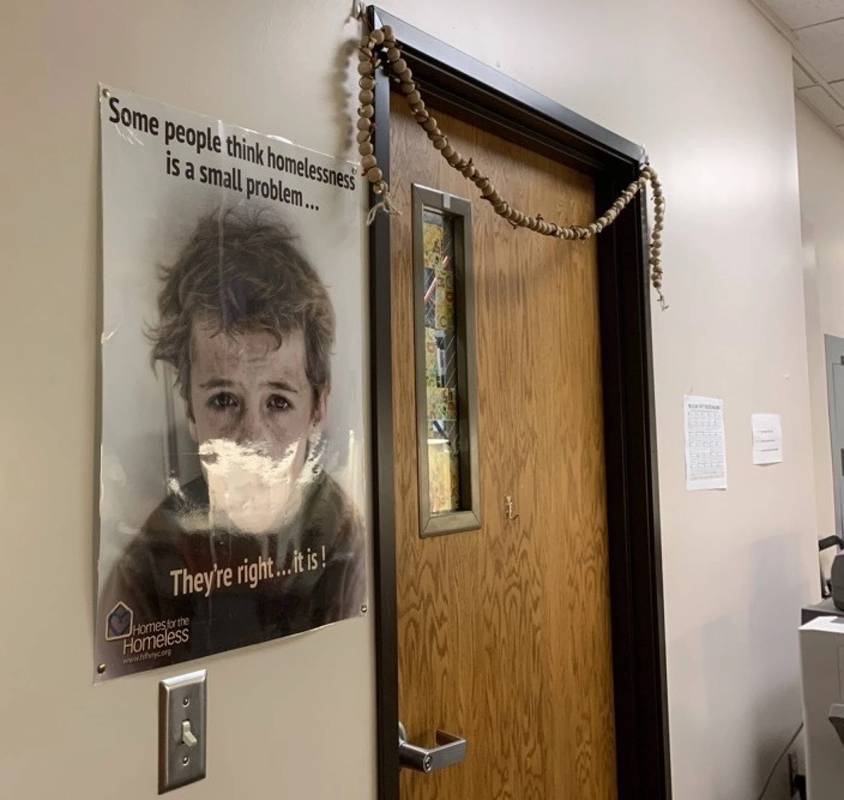
When O’Meara identifies a student or family under McKinney-Vento at the school, she works with Sauer at Micah’s House to figure out what resources the school can offer the family and what resources the nonprofit provides.
While the school can’t help with expenses such as rent and electricity, Micah’s House can — as a last resort. Micah’s House requires the family in need to show the payment Micah’s House is making on their behalf is the final payment needed to stay in their house or keep the electricity on.
“We’re not about paying bills. We’re not about paying rent,” O’Meara said. “We’re about maintaining safe housing.”
O’Meara said the school’s partnership with Micah’s House ensures families receive help both in and out of school.
As Lexington’s liaison, O’Meara said, she’s seen how a child’s lack of access to dental care or knowing where they will sleep affects a student’s performance in school.
“If you are being evicted from your home, and you have nowhere to go, you can imagine the emotional stress that puts on a child,” O’Meara said. “Knowing what their family situation is ultimately impacts their education.”
Sauer said the partnership helps prevent families from feeling isolated.
“Ultimately, at the end of the day, we want these families to know that they’re not on their own, and that we see them,” she said. “The best way to show somebody that you see them is meeting their basic needs.”
‘It takes a village’
About four hours northeast of Lexington, the school district in Winnebago, Nebraska, also partners with several community organizations. Winnebago Public Schools has over 600 students and is on the Winnebago Reservation, which is located in northeast Nebraska. About 90% of the student population is Native American.
All students in Winnebago Public Schools receive free breakfast and lunch through the Community Eligibility Provision because the school identified that at least 71% of students are eligible for free meals.
Marquel Harlan, Winnebago Public Schools liaison, said as needed, she works with Child and Family Services, the local police department, the Tribal Court and a local shelter called the Youth Crisis Intervention Center. The various groups discuss ways to improve student attendance and what resources each can offer to meet a student’s needs, like meals, access to mental health services and housing.
Harlan said a lack of attendance can be a symptom of unstable housing.
“It takes a village, in a sense, because the school can only help with what’s within the school,” Harlan said. “My job is to try to help bridge that connection with outside of school.”
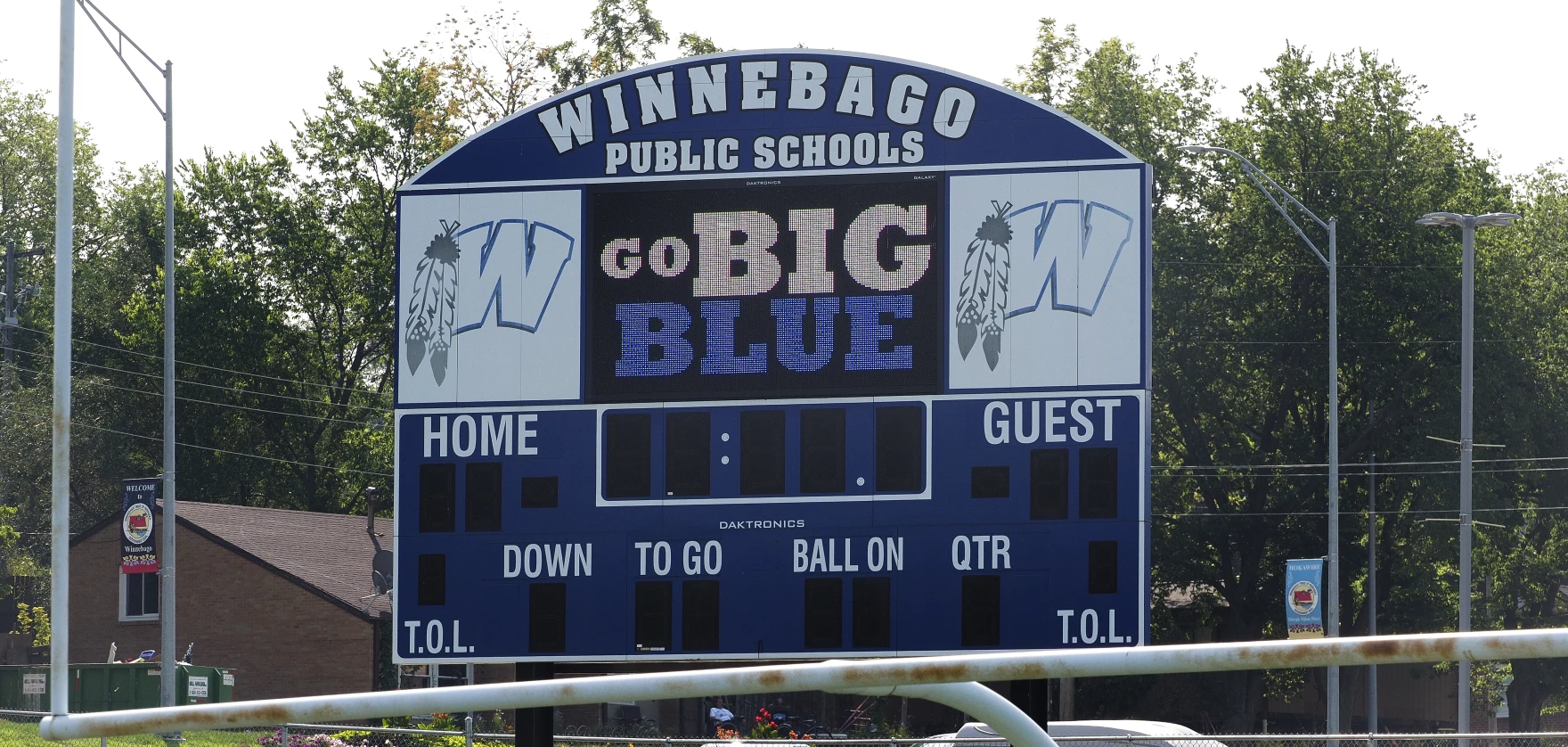
Superintendent Kamau Turner said these connections and resources have helped raise attendance in the district.
Winnebago gives students access to showers and washing machines. Last school year, the district received $1,500 from a McKinney-Vento grant — with an additional $1,500 from the school — for hygiene supplies, such as deodorant and toothpaste.
School districts are required by a federal law called Title I to set aside at least $100 for each student identified as homeless every year, according to Carmoney. Districts can also apply for grant money specifically for McKinney-Vento services, like providing school supplies or hygiene products.
The federal government requires school districts to match the funds they receive and have at least 20 students identified under McKinney-Vento from the previous school year to apply, Carmoney said.
“That is a bit of a challenge for some districts who have some families but not quite enough that they don’t qualify for the grant,” Carmoney said. “They have to use either general funding or find some other funding sources to help serve those kids.”
Turner said the majority of students at Winnebago move around a lot and need extra support getting to school. The funding specifically set aside for McKinney-Vento isn’t always enough to cover every expense a student needs help with.
Turner also said he worries how the label “homeless” could affect a student.
“If it’s gonna save a kid some mental anguish and social stigma, I would choose to just (say), ‘We’ll find that money, and we’ll still take care of your needs exactly the same as we would, to save you that trouble,’ because I know how that is,” he said.
Turner can relate to many of his students because he grew up not always knowing where he would be sleeping at night.
“When I think of the nights that me and my family slept in our car because we didn’t have housing, I did not want to go to school,” Turner said. “If it wasn’t for them serving breakfast and lunch at school, I absolutely would not have wanted to go to school.”
He uses his experience to push incentives for students to come to school, like a certification program for students to become car mechanics. Winnebago also has another apprenticeship program with Ho-Chunk Inc., a community organization that focuses on creating jobs and helping the Tribe reach economic self-sufficiency. The program allows students to gain experience in construction or working with wildlife.
The school district also offers multiple incentives for students with good attendance, including field trips and prizes.
“If I’m homeless, is ‘how to write this English paper’ or ‘how to do geometry or science,’ is any of that relevant to me? Not necessarily,” Turner said. “What’s relevant to me is being able to make money, have a roof over my head and feed myself.”
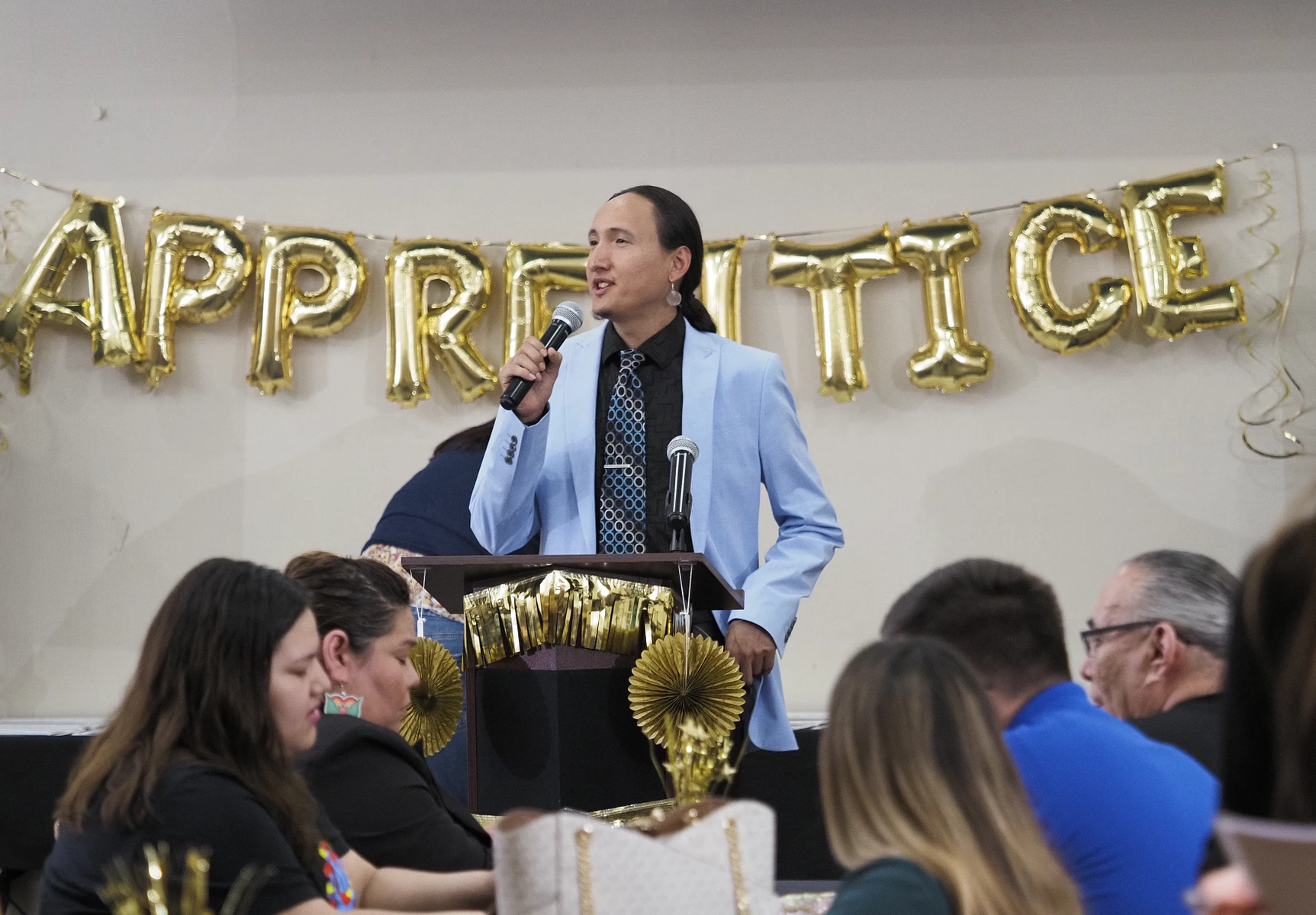
Focusing on the children
The McKinney-Vento Act is meant to help students with housing issues overcome those outside barriers affecting them in school. Baten, in Lexington, said the help she’s been getting from McKinney-Vento funding and nonprofits — clothes, food, a bill — has done just that for the kids in her household.
“I'm grateful because whichever program that comes out here, they call me to offer me that program for the children, because especially the children are the ones who need food and clothing the most,” Baten said through an interpreter. “That's the most important thing for me.”
“Y también estoy agradecida porque cualquier programa que sale aquí, ellas me llaman para ofrecerme ese programa para los niños porque en especial los niños son los que más necesitan sean comida, vestuario. Eso es lo más importante para mí.”
This school year, Nebraska awarded over $450,000 across 13 school districts. Of those 13 districts, the smallest student population was at Crete Public Schools, with about 2,230 students.
Carmoney said some schools use the funding to bring in licensed mental health professionals or for behavior coaching during the school day.
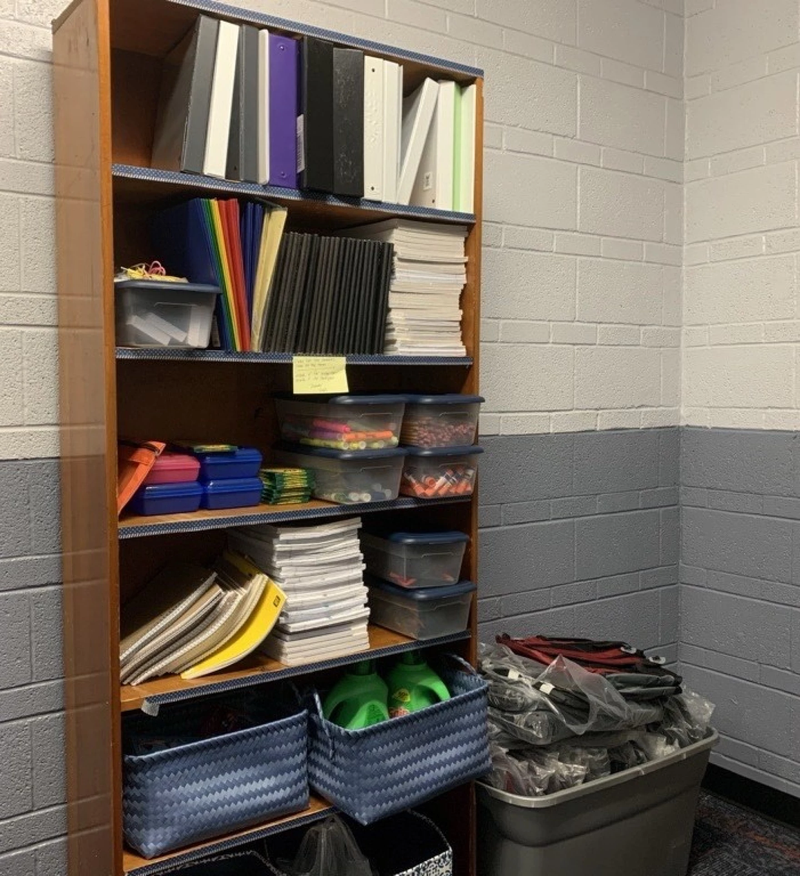
“What can we do while the kids are at school to help them make progress, in the educational system, the same as their peers?” Carmoney said. “Then we get the big storm of the outside world, of what can we do when the kid leaves this building?”
Carmoney said a one-time funding infusion under the American Rescue Plan — Homeless Children and Youth program helped schools that usually don’t get McKinney-Vento funding.
“It has started some really great programs,” Carmoney said. “It's been able to get more staffing, more supplies, more contracts with community-based organizations.”
The ARP-HCY funding ended in September.
“So, some schools were able to do a little bit, but it's not sustainable,” she said.
Carmoney spent the back-to-school season visiting communities around the state and hosting shopping events with some of the money the state received from ARP-HCY. Families were able to spend about $120 per child to get what they needed to start the new school year.
“They get new backpacks, new shoes, new clothes, deodorant,” Carmoney said. “They are going to look good, feel good on that first day of school.”
Carmoney has a few more shopping events across the state focused on winter clothes.
But looming over all of this is what happens now that the one-time rescue act program has ended, and how coordinators and liaisons will step up to support students who are homeless. Carmoney said the state is looking at how to create more partnerships for schools to use.
“There's no point in having a great program for three years if there's not going to be any funding for it afterwards,” Carmoney said. “Expecting the district to come up with a couple hundred thousand dollars to keep this going is super challenging and not always realistic.”
Uncounted/Unschooled is a continuing series from The Midwest Newsroom.
Previously in our series: A 'hidden population' of homeless students in the Midwest isn't getting school services
Daniel Wheaton and Kavahn Mansouri contributed to this report.
